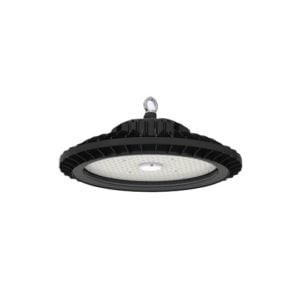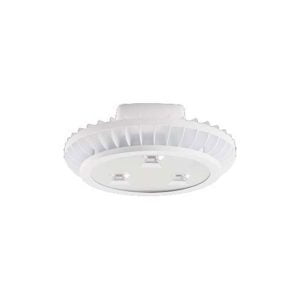High bay lighting is the standard choice for elevated ceilings, usually starting out 20 feet and extended to about 40 feet or so. These powerful fixtures are needed to project illumination further than normal while maintaining an even spread throughout the building. As such, they are ideal for commercial and industrial spaces, including warehouses, hangars, manufacturing facilities and large department stores. These buildings have to prioritize output and quality, as being able to see clearly in a warehouse, for example, can be a matter of safety. There are several technologies that can be used for this purpose, though metal halides, pressurized sodium and LED fixtures are the standout options. And among those, LED technology is the most promising going forward.
The Power of High Bay Lighting
 Tall ceilings are a challenge for fixture experts, as the further the distance between the fixture and the target, the more losses are to be expected. Although some degree of loss is expected for every project, distance exacerbates the issue. The only solution is more power and better aiming. That’s why these fixtures come in much greater wattage settings, including 400W and 1000W options. This extra power can help overcome the distance problem, but it does mean greater energy costs on the property owner’s part.
Tall ceilings are a challenge for fixture experts, as the further the distance between the fixture and the target, the more losses are to be expected. Although some degree of loss is expected for every project, distance exacerbates the issue. The only solution is more power and better aiming. That’s why these fixtures come in much greater wattage settings, including 400W and 1000W options. This extra power can help overcome the distance problem, but it does mean greater energy costs on the property owner’s part.
The inherent inefficiency of metal halide and pressurized sodium fixtures has driven the search for a better fixture option. LED technology is almost surely going to be that option, and is close to reaching critical mass throughout the industry. Initially, LED fixtures were too expensive upfront, and didn’t make up this cost quickly enough to justify the switch to LED. But like with any engineering breakthrough, the cost has been brought down with further improvements, and the return on investment is now reasonable. Other reasons to consider LED high bay lighting includes:
 Strong directional qualities – The primary problem with metal halides and pressurized sodium is that they radiate illumination in all directions. As a result, they need heavy reflectors to focus the beam and ensure adequate illumination reaches the floor. This increases losses and adds weight to the fixture. LED fixtures, though, are directional in nature, so they can be aimed easily and without major losses. The result is greater efficiency and more even illumination.
Strong directional qualities – The primary problem with metal halides and pressurized sodium is that they radiate illumination in all directions. As a result, they need heavy reflectors to focus the beam and ensure adequate illumination reaches the floor. This increases losses and adds weight to the fixture. LED fixtures, though, are directional in nature, so they can be aimed easily and without major losses. The result is greater efficiency and more even illumination.- Maintenance free for years – Switching out fixtures 40 feet up is a costly use of labor, and can badly disrupt operations at ground level. Metal halides and pressurized sodium, unfortunately, have to be replaced usually within 10,000 hours of installation. LED fixtures, though, can maintain performance for 50,000 hours at a minimum, making them practically maintenance free for years after placement.
- Better control – Such powerful fixtures can be a drain on a facility if they aren’t utilized efficiently. LED fixtures can be tied to controls that ensure the fixtures are only on when needed. Occupancy controls and timers lead the way here, extending the life of the fixture in the process.
LED technology is the future of commercial and industrial illumination, and is ready to bring impressive savings and control to facilities in any industry.




